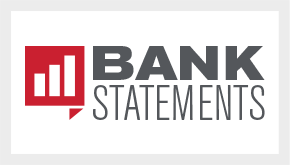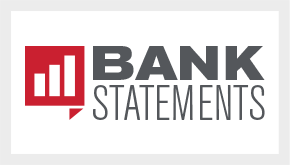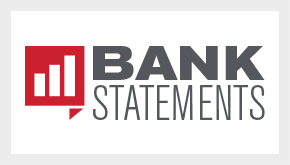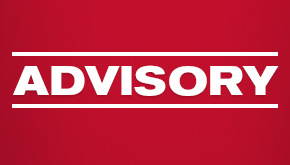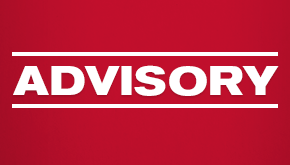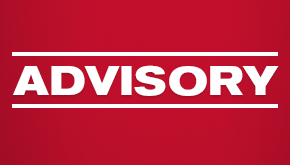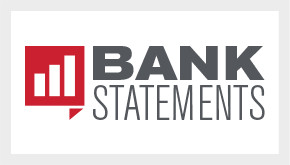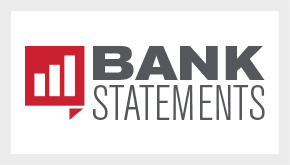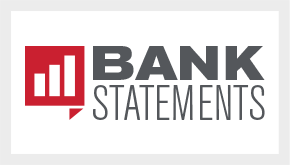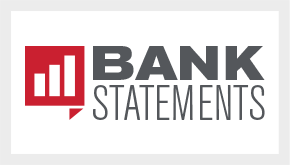Silicon Valley Bank’s Parent Files for Chapter 11 Bankruptcy: What You Need to Know
The parent company of Silicon Valley Bank (SVB), SVB Financial Group (SVB Financial or the Debtor), filed for Chapter 11 bankruptcy relief in U.S. Bankruptcy Court for the Southern District of New York on Friday, March 17, 2023 (Petition Date), Case No. 23-10367. The action was assigned to Chief Bankruptcy Judge Martin Glenn. Neither SVB nor any of its affiliated companies are included in the bankruptcy filing.
The Debtor retained Sullivan & Cromwell LLP as its bankruptcy legal counsel. Additionally, Alvarez & Marsal North America, LLC (A&M) was appointed as the Debtor’s restructuring adviser on March 12, 2023, and William C. Kosturos, a Managing Director of A&M, was appointed as the Debtor’s Chief Restructuring Officer on March 13, 2023. See Declaration of William C. Kosturos in Support of the Debtor’s Chapter 11 Petition and First Day Pleadings [Docket No. 21] (Kosturos Declaration). The Debtor requested permission from Judge Glenn to retain Kroll Restructuring Administration LLC (Kroll) as its claims and noticing agent.
According to The Wall Street Journal, this is the largest bankruptcy filing stemming from a bank failure since Washington Mutual collapsed in 2008. SVB Financial’s bankruptcy filing follows the California Department of Financial Protection and Innovation’s closure of SVB on March 10, 2023, and the appointment the Federal Deposit Insurance Corporation (FDIC) as the receiver of SVB. The FDIC, which is represented in the bankruptcy case by Reed Smith LLP, transferred all deposits and substantially all assets of SVB to the newly created bridge bank operated by the FDIC: the Silicon Valley Bridge Bank, National Association (Bridge Bank).
In filing the bankruptcy case, SVB Financial instituted what is known as a “free fall” bankruptcy – a bankruptcy filing in which the Debtor obtains bankruptcy protection without a negotiated strategy forward and before it is able to identify all of its creditors, equity holders and ongoing obligations. SVB Financial’s “free fall” bankruptcy case is unsurprising given the speed of the collapse of SVB, resulting in a lack of opportunity for pre-bankruptcy preparations and negotiations. Ideally, a large corporate debtor like SVB Financial would spend months preparing for a potential bankruptcy filing with the bulk of the work having been completed in the front end of the case. That was not possible in this case.
It is not unprecedented for a parent or holding company like SVB Financial to seek bankruptcy protection after a subsidiary bank is placed into federal receivership. Different procedures are used in the United States to oversee insolvent banks and nonbank companies. A bankruptcy judge supervises the resolution process for nonbank companies, whereas the FDIC acts as the receiver for insolvent banks. See 11 U.S.C. §§ 109(b), (9) (stating that banks are ineligible for bankruptcy). While the Bankruptcy Code prevents banks from filing for bankruptcy protection, it permits bank holding companies to do so. For example, Washington Mutual filed a Chapter 11 case in U.S. Bankruptcy Court for the District of Delaware after subsidiary Washington Mutual Bank collapsed in 2008 and was taken over by federal regulators.
Company Background
According to the Debtor’s bankruptcy petition, SVB Financial is a financial services company focusing on the innovation economy and offering financial products and services to clients internationally. The Debtor is a Delaware corporation established in 1999, with its principal place of business located in New York City.
Prior to the commencement of the bankruptcy case, the Debtor’s businesses and operations comprised four segments: SVB, a state-chartered bank; SVB Private, the private banking and wealth management division of SVB; SVP Capital, a venture capital and credit investment platform that focuses on funds management; and SVB Securities LLC, an investment bank. The Debtor provides equity commitments to the SVB Capital business platform, which serves as the venture capital and credit investment arm of the Debtor’s businesses that organizes funds, makes investments, and enters into commitments to make future investments in private companies and venture capital funds. SVB Capital comprises 30 fund families of over 100 legal entities.
On March 17, 2023, NASDAQ notified SVB Financial that trading of SVB Financial’s common stock and registered depositary shares will be suspended on March 28, 2023, as a result of SVB Financial’s failure to meet NASDAQ’s continued listing rules and standards. After that date, SVB Financial common stock and registered depositary shares will be immediately eligible to be quoted on the OTC Pink Quotation System. Prior to the trading of its stock being halted on March 10, 2023, SVB Financial traded on NASDAQ under the ticker “SIVB.”
Assets and Liabilities
SVB Financial had approximately $19.68 billion in total assets as of Dec. 31, 2022. As of March 19, 2023, the Debtor holds approximately $2.04 billion in cash in accounts held by Bridge Bank and certain other banks, and $92.8 million in marketable securities, including Treasuries.
The Debtor has approximately $3.37 billion in aggregate funded indebtedness, all of which is unsecured. The indebtedness includes Senior Notes. On Sept. 10, 2010, SVB Financial entered into an indenture with U.S. Bank National Association, as trustee, pursuant to which SVB Financial has from time to time issued series of unsecured notes (Senior Notes).
On July 1, 2021, SVB Financial acquired Boston Private Financial Holdings, Inc. (Boston Private Holdings), and assumed certain liabilities related to its assumption of two statutory trusts (Trusts) in connection with the transaction. The Trusts were formed for the purpose of issuing trust preferred securities and investing the proceeds in junior subordinated debentures issued by Boston Private Holdings; there is approximately $101 million of trust preferred securities outstanding with respect to the Trusts. SVB Financial also assumed Boston Private Holdings’ obligations under certain guarantee agreements.
Pursuant to the Debtor’s Motion for Entry of Interim and Final Order (I) Authorizing, But Not Directing, the Debtor to (A) Continue to Use Its Cash Management System, Including Existing Bank Accounts, (B) Pay or Honor Certain Prepetition Obligations Related Thereto and (C) Maintain Existing Business Forms, (II) Authorizing Investment Activities, (III) Temporary Waiving the Requirements of Section 345(b) and (IV) Granting Related Relief [Docket No. 20] (Cash Collateral Motion), the Debtor estimates that it has, in the aggregate, approximately $141 million of unfunded equity commitments to the funds of the SVB Capital platform as of the Petition Date. The Debtor anticipates that it will need to make approximately $50 million in aggregate funding of equity investments on a net investment basis within the next three weeks.
The Debtor also provides a capital call line of credit facility (Capital Call Facility) to certain funds on the SVB Capital platform, under which these funds may borrow on a revolving basis in order to support working capital needs; the total commitments under the Capital Call Facility are $170 million, with $62 million outstanding as of the Petition Date.
List of 16 Largest Unsecured Creditors (Excluding Insiders)
| Creditor Name | Amt of Unsecured Claim |
| U.S. Bank National Association (Senior Notes due 2026) |
$650,000,000.00 |
| U.S. Bank National Association (Senior Notes due 2028) |
$500,000,000.00 |
| U.S. Bank National Association (Senior Notes due 2030) |
$500,000,000.00 |
| U.S. Bank National Association (Senior Notes due 2031) |
$500,000,000.00 |
| U.S. Bank National Association (Senior Notes due 2033) |
$450,000,000.00 |
| U.S. Bank National Association (Senior Notes due 2025) |
$350,000,000.00 |
| U.S. Bank National Association (Senior Notes due 2028) |
$350,000,000.00 |
| alterDomus | $2,500,000.00 |
| Ernst & Young U.S. LLP | Undetermined |
| KPMG LLP | Undetermined |
| U.S. Bank National Association (Junior Subordinated Convertible) |
Undetermined |
| Wilmington Trust Company | Undetermined |
| Silicon Valley Bridge Bank, N.A. | Undetermined |
| United Healthcare | Undetermined |
| BA2 AUAD LLC c/o TMG Partners | Undetermined |
| MUFG Fun Services (Cayman) Limited | Undetermined |
WHAT CREDITORS NEED TO KNOW NOW
The following is a very general list of issues that typically arise in a Chapter 11 bankruptcy case and is in no way meant to be exhaustive. However, all creditors and interested parties should, at a minimum, be aware of the following.
Notice of Appearance
As part of its First Day Motions, the Debtor has filed Debtor’s Motion for Entry of an Order (I) Authorizing the Debtor to Maintain a List of Creditors in Lieu of Submitting a Formatted Mailing Matrix and (II) Establishing Procedures for Notifying Parties of Commencement of this Chapter 11 Case [Docket No. 15]. The Debtor intends to make the Creditor Matrix in a readable electronic format available to any party-in-interest who so requests at the requesting party’s own cost.
To ensure an interested party receives notice of all pleadings filed in the bankruptcy case, a notice of appearance can be filed. An interested party can also visit the website maintained by Kroll, the Debtor’s proposed claims and noticing agent, to obtain case information.
First Day Hearing
The First Day Hearing has been scheduled for Tuesday, March 21, 2023, at 3 p.m. (prevailing Eastern time). This will be a hybrid hearing, i.e., conducted both in-person and electronically.
The First Day Motions were due to be filed on or before Sunday, March 19, 2023, at 4 p.m.; any written responses or objections to the First Day Motions are required to be filed before Monday, March 20, 2023, at 4 p.m. (prevailing Eastern time).
Appointment of the Official Committee of Unsecured Creditors
An official committee of unsecured creditors is created as soon as practicable by the United States Trustee (UST) after the filing of a Chapter 11 bankruptcy petition pursuant to Section 1102(a)(1) of the Bankruptcy Code. Creditors in a bankruptcy case are separated into classes, and a creditors committee consists of a class of creditors who hold similar claims against the bankruptcy debtor’s estate. Committee membership is solicited by the UST who sends out a questionnaire to the debtor’s creditors or holds an organizational meeting where creditors are selected to serve on the committee.
The committee can consult with a debtor about its business dealings, as well as investigate the debtor’s financial condition. The committee, through its counsel and with the assistance of a financial advisor, can look into financial transactions conducted by a debtor to see if there is any fraudulent conveyance or voidance preference liability to certain creditors and claw that money back for the debtor’s estate for pro rata distribution to all creditors. The committee can examine whether a potential Chapter 11 plan of reorganization is confirmable, or whether a Chapter 7 liquidation is the only viable option for a debtor. The committee also plays a major role in negotiating the Chapter 11 Plan and Disclosure Statement with the debtor to give the debtor the best chance possible to propose a plan of reorganization that will be in the best interest of the debtor’s estate and its creditors.
The committee will typically retain counsel to jointly represent the interest of all similarly situated creditors. An accountant or financial advisor is also often retained to work with the committee’s counsel to evaluate the debtor’s financial condition, along with past and current business dealings. A major benefit of an official committee, from the creditors’ perspective, is that its professional fees and expenses are deemed to be administrative expenses, which means they are paid out of the debtor’s estate and before all other creditors.
While official committees are usually comprised of general unsecured creditors, there can also be other official committees appointed, such as official committees of long-term disabled employees, retirees, bondholders or equity holders (such as the Official Committee of Equity Security Holders in the Washington Mutual bankruptcy case appointed on Jan. 11, 2010, by the UST to represent all shareholders of both preferred and common stock).
In the absence of an official committee designation, ad hoc committees also can be formed, although their professional fees are not normally paid from the debtor’s estate.
Because the UST moves quickly to form the official committee(s), creditors that are interested in serving on the committee should submit the completed questionnaire form to the UST as soon as possible after the Petition Date.
Ad Hoc Committee of Bondholders
As reported in an earlier advisory, bondholders began forming a group the week of March 13 in hopes of exercising additional control over the bankruptcy case and collecting proceeds from the sales of the company’s private-wealth and other units. The bondholder group includes Centerbridge Partners, Davidson Kempner Capital Management LP and Pacific Investment Management Co. (Pimco). A Notice of Appearance has already been filed on behalf of the ad hoc group of senior noteholders by Davis Polk & Wardwell LLP and PJT Partners is acting as the group’s financial adviser.
341 Meeting of Creditors
Soon after a bankruptcy case is filed, a meeting is held so that creditors and the trustee can ask questions about the debtor’s financial situation. This meeting is required by Bankruptcy Code Section 341(a), and the meeting is presided over by the trustee assigned to the case and/or a representative of the UST’s Office. Bankruptcy Rule 2002 provides that notice of the meeting of creditors must be provided at least 21 days in advance via mail to all creditors and shareholders, or by publication if the Court finds that notice is impracticable or supplement is desirable. Given the sheer volume of creditors in this bankruptcy case, notice by publication is anticipated and creditors should regularly monitor public notifications.
Filing of Debtor’s Schedules
A debtor is required to file the Schedules of Assets and Liabilities (Schedules) and Statement of Financial Affairs (SOFA). The SOFA should provide creditors with a view of the Debtor’s general finances and operations. The Schedules must include an accounting of all of the Debtor’s assets and liabilities as of the Petition Date. Importantly, each creditor of the Debtor should be included in the list of liabilities, including the claim amount and priority. It is important that a creditor review the Schedules and any subsequent amendments to confirm that the Debtor has accurately listed the creditor’s claim amount and classification.
The Debtor’s Schedules are due to be filed on or before March 31, 2023, but as part of the First Day Motions, the Debtor filed the Debtor’s Motion for Entry of an Order (I) Extending Time to File Schedules of Assets and Liabilities, Schedules of Current Income and Expenses, Schedules of Executory Contracts and Unexpired Leases and Statements of Financial Affairs, (II) Extending Time to File Rule 2015.3 Financial Reports, and (III) Waiving Requirements to File the List of Equity Holders and Serve Notice of Commencement on All Equity Holders and (IV) Granting Related Relief [Docket No. 16] (Motion to Extend Deadline to File Schedules). The Debtor seeks to extend the time to file its schedules of assets and liabilities, schedules of current income and expenses, schedules of executory contracts and unexpired leases, and statements of financial affairs by 45 days. The Debtor also seeks to extend the deadline to file its initial report of financial information with respect to entities in which the Debtor holds a controlling or substantial interest by 30 days after the initial date set for the meeting of creditors to be held pursuant to Section 341 of the Bankruptcy Code. Additionally, the Debtor seeks to waive the requirements to file a list of equity security holder and serve notice of commencement of the bankruptcy case on all equity security holders.
The Debtor is seeking this relief, in part, due to the Debtor’s current inability to access a substantial portion of its books, records, electronic systems and key employees as a result of the receivership. According to the Motion to Extend Deadline to File Schedules, the Debtor had been receiving limited information on its business operations from personnel at Bridge Bank, but “[t]hat cooperation stopped in the days immediately prior to the filing, and Bridge Bank employees have since not provided any of the Debtor’s information to the Debtor’s officers or representatives and have cut off access to books and records.”
Bankruptcy Rule 1007(a)(3) requires a debtor to file, within 14 days after the Petition Date, a list of the debtor’s equity security holders. Bankruptcy Rule 2002(d) requires that equity security holders be provided notice of commencement of the bankruptcy case, among other things. The Court has authority to modify or waive these requirements. The Debtor seeks to waive these requirements because it is a public company and as of Dec. 31, 2022, it had 59,171,883 shares of common stock outstanding, 383,500 shares of preferred stock outstanding, and complying with the requirements would be expensive, time consuming and serve little or no beneficial purpose.
Filing Proof of Claim
The Debtor will move to set a deadline for creditors to file a claim(s) against the Debtor’s estate (Claim Bar Date). A creditor that wants to assert a claim against the Debtor for any amount owed to the creditor must file its claim in the manner prescribed by the Order establishing the Claim Bar Date. Failure to timely file a proof of claim in the bankruptcy case can result in a creditor’s claim being disallowed and expunged. In certain circumstances, however, the filing of a proof of claim can be deemed the creditor’s consent to jurisdiction in the bankruptcy court, which certain creditors will want to avoid.
Employee Considerations
The Debtor filed the Debtor’s Motion for Entry of Interim and Final Orders (I) Authorizing, but Not Directing, the Debtor to (A) Pay Prepetition Compensation and Benefits Obligations and (B) Continue Compensation and Benefits Obligations, (II) Authorizing, But Not Directing, Applicable Banks and Other Financial Institutions to Honor and Process Related Checks and Transfers and (III) Granting Related Relief [Docket No. 18] (Interim Compensation Motion). According to the Interim Compensation Motion, the Debtor does not believe it directly employs any individual; instead, services are performed for the Debtor by employees and other service providers of Bridge Bank in accordance with a Master Intercompany Services Agreement (Services Agreement).
The Debtor has identified 110 employees of Bridge Bank who are key members of the Debtor’s SVB Capital business (SVB Capital), and who also provide legal, governance, accounting, finance and other operational functions that the Debtor claims are critical to its ability to continue operations. Additionally, service providers of the Debtor’s non-debtor subsidiaries may provide certain services. These individuals’ compensation and benefits are paid by Bridge Bank subject to reimbursement by the Debtor pursuant to the Services Agreement for its proportionate share of the costs. Moreover, employees and other service providers of Bridge Bank received certain of their compensation and benefits through the Debtor’s compensation and benefits programs. Following the receivership, those service providers ceased to be eligible to participate in many of the Debtor’s programs.
The Debtor states in its Compensation Motion that it may be in its best interest to work with Bridge Bank to transfer the employment of individuals whose primary responsibilities are, or will be, to the Debtor or its non-debtor affiliates, or to hire or engage service providers to provide services that are currently performed by Bridge Bank. Similarly, the Debtor may determine it is appropriate to try and transfer certain Debtor benefit programs and related vendor agreements to Bridge Bank.
Pursuant to the Services Agreement, the Debtor pays Bridge Bank for the cost of services performed by the Bridge Bank service providers. The Debtor estimates the monthly cost of its reimbursement obligations in respect of service provider wage and benefits is approximately $7.8 million. As of the Petition Date, the Debtor owed approximately $11.8 million in respect to the reimbursement obligations. The Debtor also pays for the cost of services performed for the Debtor by employees of the Debtor’s foreign subsidiaries; the Debtor estimates that the monthly cost of wages and benefits payable with respect of services performed by such employees of the Debtor’s foreign subsidiaries is approximately $17.9 million and, as of the Petition Date, the Debtor owed approximately $8.3 million in respect of such amounts. Certain Bridge Bank employees also perform services for SVB Capital; the Debtor estimates the monthly cost related to such employees is approximately $1.9 million; as of the Petition Date, the Debtor owed approximately $900,000 in respect of such amounts. The Debtor requests authority to pay the prepetition amounts outstanding and to continue reimbursements in the ordinary course.
The Debtor sponsors certain health, welfare, insurance and other benefits programs primarily for the benefit of individuals who are now employees of Bridge Bank. The majority of the cost for these benefit programs was reimbursed by SVB. Following the receivership, most participants of these programs ceased to be eligible. Bridge Bank continues to be responsible for the substantial majority of the ongoing costs of the benefit programs.
In support of its separation from Bridge Bank, the Debtor may determine that it’s in its best interest to transfer or assign the sponsorship of all or a portion of these benefit programs and associated vendor contracts to Bridge Bank, or to discontinue certain programs. The Debtor, therefore, seeks authority to continue, transfer, discontinue or terminate any of these benefit programs and related contracts in the ordinary course of business.
The Debtor also provides comprehensive medical, dental and vision benefits to eligible individuals and their dependents, as well as telehealth benefits and basic life and AD&D insurance. Certain individuals may purchase additional life insurance. In addition, The Debtor offers short-term and long-term disability benefits, as well as vacation benefits, health care and dependent care flexible spending accounts, child care assistance, commuter benefits, sick time, business travel accident insurance and referral program incentives. As of the Petition Date, the Debtor estimates that the approximate accrued amount owed with respect to these benefits payable in respect to individuals employed at foreign subsidiaries of the Debtor and individuals employed by Bridge Bank who perform services for SVB Capital was approximately $4.5 million. The Debtor requests authority to honor any prepetition obligations arising from these benefit programs.
The Debtor also sponsors a 401(k) plan for the benefit of certain employees located in the United States and similar defined contribution benefits to employees outside the United States. The Debtor matched the 401(k) plan up to certain limits. The Vanguard Group serves as the record-keeper and trustee of the 401(k) plan. In the last year, the Debtor’s monthly payments on account of the 401(k) plan contributions averaged approximately $900,000. As of the Petition Date, the Debtor estimates that there was approximately $450,000 outstanding on account of the 401(k) plan. The Debtor seeks authority to honor any prepetition obligations on account of the 401(k) plan and to properly forward any employee contributions to the applicable plan trust.
The Debtor’s Board of Directors (the Board) pays nonemployee directors an annual retainer of $90,000 for service on the Board, an annual retainer ranging from $15,000 to $100,000 for service on a committee of the Board, and an annual retainer ranging from $15,000 to $100,000 for service as the Chair of the Board or a committee of the Board, and historically granted an equity-based award with a grant date value of $160,000, or $240,000 for the Chair of the Board. The Debtor requests authority, on a final basis only, i.e., at the end of the bankruptcy case, to pay any outstanding, prepetition amounts payable in the ordinary course in respect of the director compensation, and to continue the program in the ordinary course, provided that the Debtor may pay any amount that historically was awarded in the form of an equity-based award in cash.
Sale of Assets
The sale of a debtor’s assets can occur through an auction under Section 363 of the Bankruptcy Code and/or as part of a debtor’s reorganization plan under Section 1129 of the Bankruptcy Code. In both instances, the sale must be approved by the Court. In the case of a sale pursuant to plan of reorganization, the plan itself must be first approved by the various required creditor classes. A creditor needs to remain aware of how a sale may impact recovery of its claim, or other rights of the creditor, such as a lease that is being assumed as part of the sale, or property that is being sold free and clear of any liens or other encumbrances.
Assumption and Rejection of Unexpired Leases and Executory Contracts
As part of the bankruptcy process, the debtor will often assume, assume and assign, or reject certain leases and contracts. Parties to these leases and contracts may be entitled to cure amounts (i.e., the debtor must pay any amounts due prepetition before the lease or contract can be assumed). Similarly, if a lease or contract is rejected, there may be rejection damages that must be filed before a certain deadline. Additionally, there may be prohibitions against assignment pursuant to the Bankruptcy Code that can be asserted if appropriate.
Stock Restrictions
As part of its First Day Motions, the Debtor also filed the Debtor’s Motion for Entry of Interim and Final Orders (I) Establishing Notification Procedures and Approving Restrictions on (A) Certain Transfers of Interests In, and Claims Against, the Debtor and (B) Claims of Certain Worthless Equity Deductions and (II) Granting Related Relief [Docket No. 19] (Equity Restriction Motion). The Equity Restriction Motion seeks authority to establish procedures related to (i) certain transfers of and declarations of worthlessness for federal, state or non-U.S. tax purposes with respect to the Debtor’s existing common or preferred stock, and (ii) certain transfers of claims against the Debtor. The Motion further seeks to direct that any purchase, sale or other transfer of stock in violation of the proposed procedures shall be null and void ab initio.
The Debtor explains in its Equity Restriction Motion that, generally, a company generates net operating losses (NOLs) if the operating expenses it has incurred exceed the revenues it has earned during a single year. Generally, a company may carry forward NOLs to reduce future tax obligations in a tax year(s) after the year in which the NOLS were generated. In addition, business interest expense in excess of certain thresholds is disallowed as a deduction but generally may be carried forward and deducted in future tax years. Finally, “net unrealized built-in loss” includes, among other things, certain tax losses resulting from the disposition of assets. Such net unrealized built-in loss in respect of the value of assets, together with business interest expense, NOLs and certain other tax attributes, are defined in the Motion as “Tax Attributes.”
The Debtor believes that the Tax Attributes provide for potential material future tax savings or other tax structuring possibilities in the bankruptcy case because the Debtor can potentially carry forward a portion of its Tax Attributes to offset future taxable income, thereby reducing its future tax obligations and may be utilized to offset any taxable income generated during the bankruptcy case. The Debtor believes that as of Dec. 31, 2022, it had federal NOL carryovers in the amount of approximately $4.5 billion, foreign NOL carryovers in the amount of approximately $22 million, state general business credit carryforwards in the amount of approximately $16 million, foreign tax credits in the amount of approximately $43 million, and an indeterminate amount of net unrealized built-in loss.
The Debtor fears that an “ownership change” may negatively impact its ability to use the Tax Attributes due to Section 382 of the Internal Revenue Code (IRC), which limits the amount of taxable income that can be offset by a corporation’s Tax Attributes in taxable years following an ownership changed as defined by Section 382(g) of the IRC. The Debtor explains in its Motion that in general, an ownership change occurs if the percentage (by value) of the stock of a corporation owned by one or more 5% shareholders has increased by more than 50 percentage points over the lowest percentage of stock owned by such shareholders at any time during the three-year testing period ending on the date of the ownership change. Ownership change can also occur as a result of a “worthless stock deduction” claimed by any person that owned 50% or more of a corporation’s stock “at any time during the three-year period ending on the last day of the taxable year” with respect to which the worthless stock deduction is claimed. If the 50% shareholder still owns the stock at the end of such taxable year, Section 382 of the IRC treats the person as newly purchasing the stock on the first day of the next taxable year. If an ownership change occurs, the IRC limits the amount of a corporation’s future income that may be offset by its “pre-change losses” to an annual amount based on the fair market value of all stock of the corporation prior to the ownership change multiplied by the long-term tax-exempt rate that applied to the month of the ownership change. The “pre-change losses” would include the Tax Attributes, and the limitation would be permanent. Therefore, certain transfers of stock effectuated before the Debtor’s emergence from Chapter 11 or the consummation of a taxable sale of assets of the Debtor could trigger an ownership change for tax purposes and endanger the Debtor’s ability to utilize the Tax Attributes.
To maximize the use of the Tax Attributes, the Debtor seeks relief that will enable it to closely monitor certain transfers of stock and claims of worthless stock deductions so as to be in a position to prevent such transfers or claims of worthless stock deductions. The relief is limited to only certain holders of equity interests, as set forth in detail in the Equity Restriction Motion.
Complaints by the Debtor Against Creditors and Other Non-Debtors
A debtor can recover property that belonged to the debtor, was owed to the debtor or was paid to the creditor prior to the Petition Date through the filing of a turnover, preference or fraudulent conveyance complaint pursuant to certain provisions of the Bankruptcy Code. There are recognized defenses to these types of actions that may be applicable, including, but not limited to, the conveyance of fair consideration.
Automatic Stay
Upon the filing of a bankruptcy petition, an injunction called the “automatic stay” is generally imposed pursuant to Section 362 of the Bankruptcy Code, which prevents certain creditors from commencing or continuing to take action against a debtor or the debtor’s property. Entities that violate the automatic stay can be sanctioned by the Court. A creditor can file a motion for relief from the automatic stay to try and either remove or modify the injunction so the creditor can resume collection or litigation efforts against the debtor. The Court may grant or deny the motion depending on the circumstances of the case.
Plan and Disclosure Statement
A plan of reorganization is usually filed by the debtor or can be filed jointly with the debtor and an official committee. It is a detailed document setting forth, among other things, how the debtor will continue to operate orliquidate and how the claims against the debtor’s estate will be treated and what distribution is expected.
The disclosure statement must contain information about the assets, liabilities and business operations of the debtor that is sufficient to enable a creditor to make an informed judgment about the debtor's plan of reorganization. The disclosure statement must be approved by the Court before the debtor can send the disclosure statement, along with the proposed plan, to creditors for voting.
Creditors whose claims are “impaired,” meaning their contractual rights are being modified under the terms of the plan or will be paid less than the full value of their claims, will be entitled to vote on the plan by ballot. After the ballots are collected and tallied, and the creditors vote to approve the plan, the Court will hold a hearing to determine whether to confirm the plan.
Creditors and other parties-in-interest should carefully review the plan and disclosure statement to determine how their rights and claims against the debtor’s estate are being treated under the terms of the plan and vote appropriately if entitled to do so.
The plan may also contain other objectionable terms that merit an objection from other creditors and non-creditors. For example, the plan may contain releases of liability of the debtor’s directors and officers, or objectionable third-party releases. In the case of SVB Financial, it is not inconceivable that the Debtor could try to obtain releases for any civil litigation that creditors or shareholders might seek to bring against them for allegedly mismanaging the company. Plans often include discharge injunctions that will serve to forever release the debtor from claims and causes of actions that were not asserted prior to confirmation. Accordingly, careful review of the plan, disclosure statement and participation in the approval process is imperative to ensure the best chance of preserving a party-in-interests’ rights.
Expected Recovery
It is far too early to make reasonable estimates about potential recovery to creditors or if a Chapter 11 plan of reorganization will even be viable. However, there is some concern that the Debtor may be required to help cover the losses at SVB, which could decrease any potential distribution to the Debtor’s creditors. While the FDIC normally only insures bank deposits up to a $250,000 limit, in the case of SVB, the FDIC has effectively eliminated that cap based on a “systemic risk exception.”
The FDIC can make up any losses to its deposit insurance fund with special assessment on other banks. The FDIC may also assert a claim against the Debtor based on its losses; the question will be what priority that claim is given and how it impacts recovery by other creditors. It is also uncertain if the FDIC could hold the parent company, the Debtor, responsible for its SVB’s losses. Similarly, the FDIC could also bring a lawsuit against the Debtor alleging that its leadership and Board mismanaged SVB.
Order of Distribution to Creditors
The Bankruptcy Code provides the order in which claims against a debtor’s estate receive distribution, which is known as the “Absolute Priority Rule.” In general, the different classes of creditors received distribution in the following order:
- Secured creditors are entitled to receive the entire value of the collateral securing their claims up to the full amount owed, with first priority liens paid before second priority liens, etc.
- Administrative creditors that provided goods or services after the Petition Date, which were deemed actual and necessary costs of preserving the Debtor’s estate.
- Priority claimants in which Congress has recognized by statute, such as certain employment-related wage and benefit claims up to a specified dollar limit. Certain tax claims are junior in the priority scheme.
- General unsecured creditors that provided goods and services to the Debtor prior to the Petition Date.
- Equity holders.
Possible Larger Impact on National and Global Economy
The decline of Bear Stearns in 2007 and its eventual collapse a year later is said to have been the tip of the Great Recession of 2008. A predominant question surrounding the SVB failure and SVB Financial’s bankruptcy is whether this is a harbinger of more serious financial distress, including the specter that the U.S. economy will fall into another recession. SVB and SVB Financial are not the only notable distressed financial companies in the news. Crypto bank Silvergate Financial also failed in March, and federal regulators closed and seized assets of Signature Bank on March 12, 2023. Internationally, Credit Suisse Group AG was forced to secure a $50 billion lifeline last Wednesday from its own central bank after the Swiss firm’s share price fell to record lows, and on March 19, 2023, it was reported that Swiss officials persuaded UBS Group AG to purchase the ailing bank. Richard Clarida, a global economic adviser at Pimco and a former Fed Vice Chair, was quoted in The Wall Street Journal: “I don’t think of this [SVB’s collapse] as being equivalent to Lehman, or 9/11, or Iraq invading Kuwait…. But whatever your views were on the odds of a recession before this, they’ve probably gone up.”
On Friday, the United States’ largest banks circled the wagons in an attempt to save another bank, San Francisco’s First Republic Bank, by means of a $30 billion cash infusion. According to The Wall Street Journal on Saturday, JPMorgan Chase & Co., Citigroup Inc., Bank of America Corp., and Wells Fargo & Co. are each making a $5 billion uninsured deposit; Morgan Stanley and Goldman Sachs Group are kicking in $2.5 billion each; and five other banks are contributing $1 billion each. It remains to be seen if this effort by the banks and the Treasury to staunch the financial panic will be successful given that First Republic Bank’s stocks fell more than 30% at the close on Friday after the announcement.
Notable U.S. Bank Failures in the Last 15 Years
Any attempt to prognosticate the extent of the current financial crisis might well be assisted by examining the relatively recent history of other failed financial institutions within the last 15 years.
Bear Stearns
The Bear Stearns Companies, Inc. (Bear Stearns) was a New York-based global investment bank, securities trading and brokerage firm until it became ensnared in the subprime mortgage crisis. Bear Stearns was founded in 1923 and survived the Stock Market Crash of 1929. Prior to its financial collapse, Bear Stearns was one of the most well-regarded financial institutions globally.
In the years leading up to its demise, Bear Stearns was heavily involved in the issuance of asset-backed securities, including mortgage securities. Investor losses increased in 2006 and 2007, prompting the Federal Reserve Bank of New York to provide an emergency loan in March 2008 in a failed attempt to try to avert a sudden collapse of the company. It was the Fed’s first intervention in a noncommercial bank since the Great Depression. However, Bear Stearns was beyond saving and was subsequently sold to JPMorgan Chase at a fraction of its value prior to the crisis. JPMorgan Chase agreed to buy Bear Stearns for $10 a share; the company had traded at $170 a share one year earlier.
Multiple lawsuits were filed by investors against the bank and its hedge fund managers in the aftermath, alleging that Bear Stearns misled investors about its exposure in the subprime market, and a class action was filed on behalf of shareholders that challenged the terms of JPMorgan’s acquisition of Bear Stearns.
Lehman Brothers
In September 2008, Lehman Brothers Holdings Inc. (Lehman Brothers) filed for bankruptcy relief. Like Bear Stearns, Lehman Brothers was a major lender of subprime mortgages, which ultimately led to its downfall. Lehman Brothers’ losses resulted fromhaving held onto large positions in subprime and other lower-rated mortgage tranches when securitizing the underlying mortgages. Like SVB Financial, the circumstances of the Lehman Brothers bankruptcy did not provide for advanced planning and Lehman Brothers filed a “free fall” bankruptcy.
Lehman Brothers was able to sell its most important assets in less than five days after its bankruptcy filing and was able to distribute more than $124.6 billion to creditors since emerging from bankruptcy. According to a Reuters article, Lehman Brothers’ 111,000 customers received all $106 billion owed. Secured creditors also received full distributions. Unsecured creditors received $9.4 billion, which constituted approximately 41 cents on the dollar.
Washington Mutual
Washington Mutual (WaMu) was a savings and loan bank and was the largest savings and loan association in the United States. By the end of 2007, WaMu had more than 43,000 employees, 2,200 branch offices in 15 states, and $188.3 billion in deposits. However, like Bear Stearns and Lehman Brothers, the subprime mortgage crisis ultimately led to the closure of the bank.
On Sept. 25, 2008, the FDIC took over the bank and sold it to JPMorgan Chase for $1.9 million. The next day, Washington Mutual Inc. (WMI), the bank’s holding company, and its remaining subsidiary, WMI Investment Corp., declared bankruptcy, which was the second-largest bankruptcy in history, after Lehman Brothers. WMI owned all WaMu shares of stock and was the sole equity holder of WaMu.
After WMI filed for bankruptcy, WMI, JPMorgan Chase, the FDIC and the bank receiver (Receiver) became involved in several lawsuits contesting the ownership of over $20 billion in assets.
The IRS asserted a claim of $12.5 billion in back taxes from WMI, which countered in 2009 by alleging losses of $20 billion. In 2010, a tax refund of approximately $5.7 billion was shared between WMI, the FDIC and JPMorgan Chase pursuant to a settlement between the parties.
WMI also sued the FDIC for $13 billion after the sale of its banking operation to JPMorgan Chase, claiming the bank did not get fair value for the sale. The parties reached a settlement that was approved by the FDIC’s Board of Directors on May 20, 2010, and WMI filed a plan of reorganization incorporating the terms of the settlement (the WMI Bankruptcy Settlement). Several parties, including equity holders, objected to WMI’s proposed plan, in particular, WMI’s proposal to release its claims against JPMorgan Chase, the FDIC and the Receiver. The Bankruptcy Court appointed an examiner to investigate WMI’s claims and determine whether the proposed settlement was fair and equitable to WMI, which was releasing the other parties as part of the settlement. The examiner ultimately found that the WMI Bankruptcy Settlement was fair.
During the confirmation process, Judge Mary Walrath, of the U.S. District Court for the District of Delaware, was critical of the plan’s release of liability granted to directors, officers and others including some hedge funds. She also noted that the four hedge funds that played a role in the Debtors’ restructuring—Appaloosa Management, Aurelius Capital Management, Centerbridge Partners and Owl Creek Asset Management—might have received material, nonpublic information that could have been used to trade the bank’s debt in violation of federal law. Nevertheless, on Feb. 24, 2012, the Bankruptcy Court confirmed the seventh amended plan proposed by the debtors. The Receiver received $843.9 million pursuant to the terms of the WMI Bankruptcy Settlement. The confirmed plan also provided for approximately $7 billion to be distributed to creditors, including significant recoveries for shareholders, who are the lowest priority of creditors and usually do not receive any distribution.
WMI filed for bankruptcy protection in the same month as Lehman Brothers. The week before Lehman Brothers filed for bankruptcy, the U.S. government agreed to rescue Fannie Mae and Freddie Mac. In the same week as the bankruptcy filing, Merrill Lynch & Co. agreed to be sold to Bank of America Corp. A week after that, the Fed bailed out AIG, and a few weeks later, Congress passed the $700 billion Troubled Asset Relief Program (TARP).
Future Legislation to Expect
The enacting of legislation for the purpose of protecting our financial markets has continued after the passage of TARP. In July 2010, the Dodd-Frank Wall Street Reform and Consumer Protection Act was signed into law with the purpose of preventing another financial crisis and was designed, in part, to give regulators greater authority to intervene when a systemically important institution falls into financial distress. The previous administration, however, rolled back some of the bank regulations and eased rules on small and medium-sized lenders. The rollback included raising the threshold from $50 billion to $250 billion under which banks are deemed too important to the financial system to fail; institutions falling below the threshold do not have to undergo stress tests designed to diagnose financial dangers. Calls are already being made to tighten up bank regulations, as well as to increase the insurance cap of $250,000 for individual depositors.


